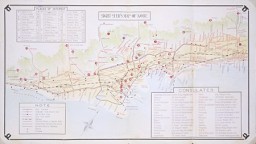
Artifact
Browse an alphabetical list of artifacts from the Holocaust and World War II. Each object tells a story about the history and demonstrates human experiences during the time period.
<< Previous | Displaying results 111-120 of 231 for "Artifact" | Next >>
-
Julian Noga's prisoner uniform jacket
ArtifactA blue and gray striped jacket from the Flossenbürg concentration camp. The letter "P" on the left front of the jacket indicates that it was worn by a Polish, non-Jewish prisoner. "P" stands for "Pole" in German. The jacket was donated to the United States Holocaust Memorial Museum by the prisoner who wore it, Julian Noga.
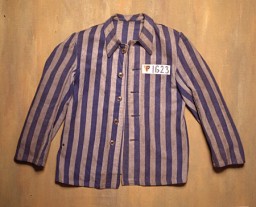
-
Julien Bryan's film canisters
ArtifactJulien Bryan stored his still photo negatives from Nazi Germany 1937 and Poland 1939 in these carefully marked metal canisters.
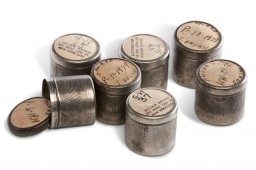
-
Karel Bruml's concentration camp cap
ArtifactAfter being deported from Theresienstadt to the Auschwitz concentration camp in 1942, Karel Bruml wore this cap as a forced laborer in the Buna synthetic rubber works located in the Buna-Monowitz section of the camp.
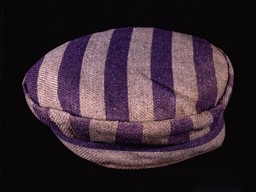
-
Knife made by Yona Wygocka Dickmann
ArtifactYona Wygocka Dickmann fashioned this jackknife from aluminum and part of a saw after the SS transferred her from Auschwitz to forced labor at an airplane factory in Freiburg, Germany, in November 1944. She used the knife to extend her daily ration of bread by cutting it in half.
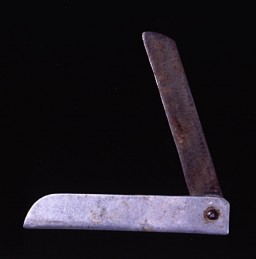
-
Krakow ghetto armband
ArtifactIn December 1939, German authorities required Jews residing in the Generalgouvernement (which included Krakow) to wear white armbands with blue Stars of David for purposes of identification. The armband pictured here was donated to the United States Holocaust Memorial Museum in 2001 by Akiva Kohane.
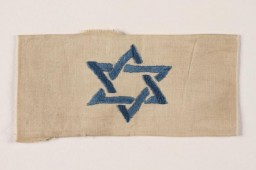
-
Large wooden crate used by Żegota to hide false documents
ArtifactThis large, lidded wooden chest was used by the Council for Aid to Jews (codenamed “Żegota”) to hide false identity documents from Nazi authorities. Żegota was an underground rescue organization of Poles and Jews in German-occupied Poland and operated from December 1942 to January 1945. Supported by the Polish government-in-exile, it coordinated efforts to save Jews in German-occupied Poland from Nazi persecution and murder. One of Żegota’s most impactful clandestine activities was producing and…
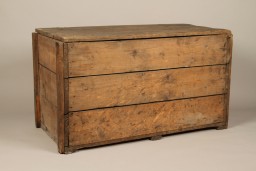
-
League of German Girls jacket
ArtifactThis League of German Girls jacket has two embroidered cloth patches handstitched to the upper left sleeve: a dark triangle displaying the name of the member’s region, South Franconia (Süd Franken), and a Hitler Youth insignia. Beginning in 1933, the Hitler Youth and its organization for girls and young women, the League of German Girls, played an important role in the new Nazi regime. Through these organizations, the Nazi regime indoctrinated young people with Nazi ideology, including antisemitism and…
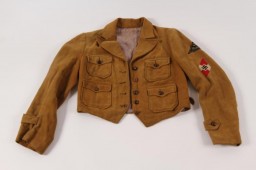
-
Lebensborn program brochure
ArtifactFront cover of a brochure advertising the Lebensborn program. The brochure describes the program's maternity homes and requirements that expectant mothers must meet to be accepted.
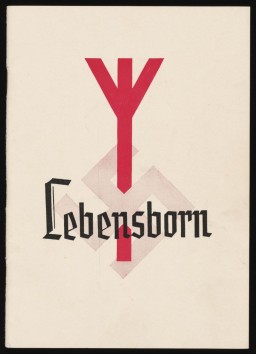
-
Lodz ghetto model
ArtifactLeon Jakubowicz, a shoemaker by training and a native of Lodz, began constructing this model of the Lodz ghetto soon after his arrival there from a prisoner-of-war camp in April 1940. The case holds a scale (1:5000) model of the ghetto, including streets, painted houses, bridges, churches, synagogue ruins, factories, cemeteries, and barbed wire around the ghetto edges. The model pieces are made from scrap wood. The case cover interior is lined with a collection of official seals, a ration card, and paper…
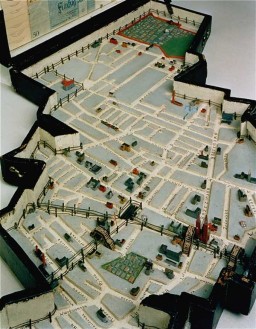
-
Map of Kobe, Japan, from tourist guide to Kobe
ArtifactThe Kobe Municipal Office issued an English-language tourist guide to Kobe and its environs. The tourist map of Kobe pictured here was included with the guide. Jewish refugees in Kobe used such pieces of information. Kobe, Japan, 1940-1941. [From the USHMM special exhibition Flight and Rescue.]
